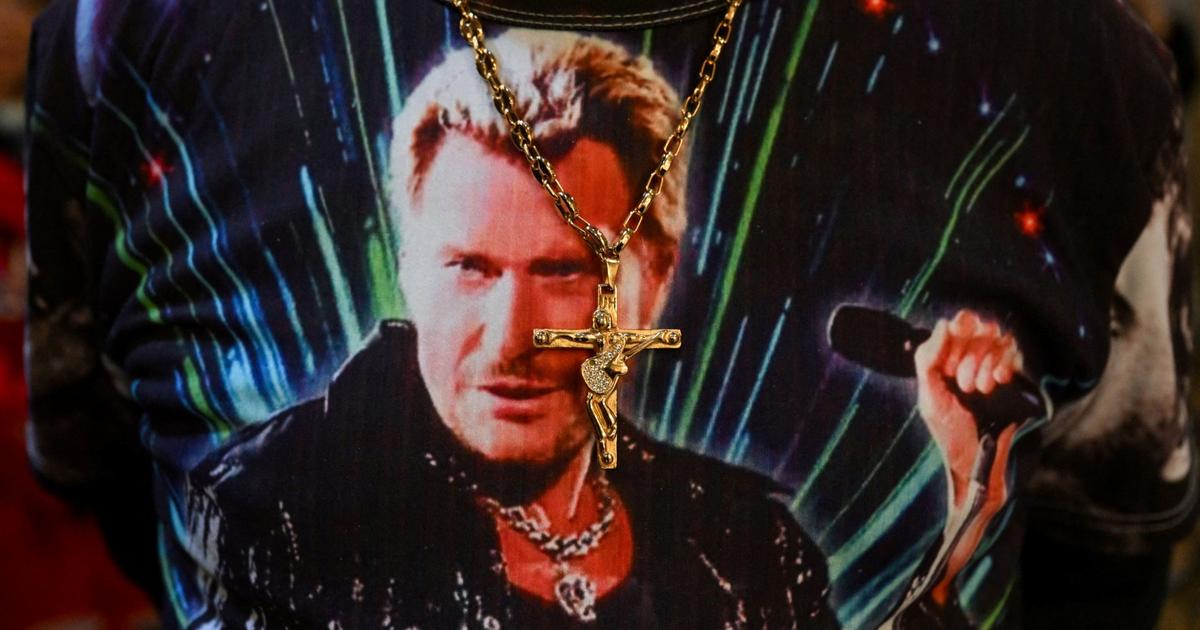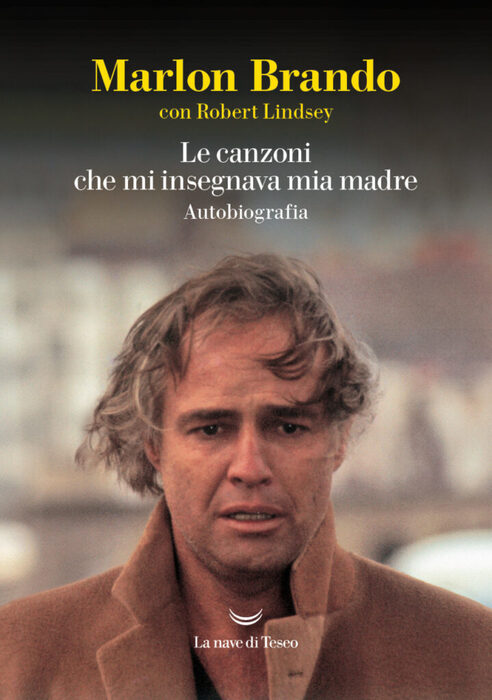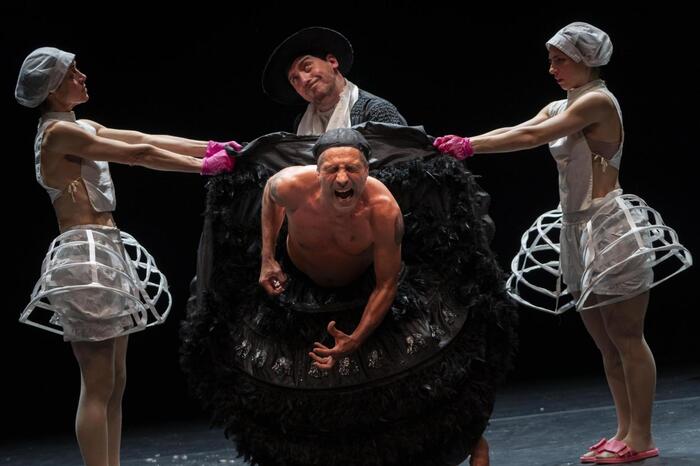"The death of the Cid", announced the magazine
Paris Match
on December 5, 1959. Indeed, a few days before they had buried a 36-year-old man dressed as Rodrigo Díaz de Vivar, the Cid Campeador, in the cemetery of the town of Ramatuelle, in French Provence.
Who was inside the suit was – or rather had been – Gérard Philippe (Cannes, 1922-Paris, 1959), a hero not of the battlefields but of the stage and celluloid, one of the best and best-known actors in France , where they considered him their prince.
His death had come to her unexpectedly, due to a sudden cancer that his family and his doctors had hidden from her.
He thought that he was just tired after his last filming, in Mexico, with Luis Buñuel and María Félix.
The result: a national tragedy.
But these days in France the day of his death is not commemorated, but the day of his birth,
If on November 18, 1922 Marcel Proust died in Paris —another of the centenaries that the neighboring country celebrates this year—, a couple of weeks later Gérard Albert Philip would be born in Cannes, the son of Marcel Philip, a lawyer and hotelier who He had moved to the Côte d'Azur to run one of his hotels, the Parc Palace, in Grasse.
Politically, Marcel was an enthusiastic follower of the extreme right: during the Nazi occupation he operated as an active collaborator, and came to house the German General Staff in the hotel at the end of the war.
For this reason he would later be sentenced to death, so in 1945 he fled to Barcelona, where he settled to start a new life thanks to the greater receptivity of the Franco regime in cases like his.
Ironically,
Gérard wanted to signify later for his commitment to the rights of workers.
A declared leftist, he led the French union of actors, for which he obtained important improvements in his working conditions.
Possibly it was a way of putting distance.
Ane-Marie Philipe, Gérard's daughter, has stated that in return her father was always looking for a father figure, which she found in the directors who guided his career.
Portrait of Gerard Philipe in 'Epiphanie' (1947).Lipnitzki (Roger Viollet via Getty Images)
Danielle Darrieux and Gerard Philipe in 'Le rouge et le noir', by Claude Autant-Lara.Franco London Films / Documento Film
Actually, he was going to become a lawyer, just like his father, but with the complicity of his mother, Minou, he decided to change his legal career to acting and, thanks to a meeting with the filmmaker Marc Allégret (the first of those replacement father figures ), began his studies in dramatic art, first in Cannes and later in Paris, where he was a student at the prestigious National Superior Conservatory.
Allégret wanted to make him make his film debut with a version of Colette
Le Blé's short novel en herbe,
but the project was banned by the collaborationist Vichy regime, and he focused on theatre.
He had been chosen to be a gardener in
Sodom and Gomorrah,
Biblical-themed play by Jean Giraudoux, when he was introduced to the show's star, Edwige Feuillère, who exclaimed: “A gardener?
But he is an angel!"
So that was the role he got, and the play was a success that led him to star in Albert Camus's
Caligula
, his definitive consecration.
Gérard Philipe treasured two great assets: his voice and his physique.
The first of them –a phonetic range not particularly deep in the style of a classical actor, but extremely beautiful, capable of executing all kinds of inflections naturally– was perfect for the scene, but the second –he was extraordinarily handsome and at the same time very expressive, thanks above all to the magnetism of his large eyes – led him inevitably to the movies.
It was from Claude Autant-Lara's
The Devil in the Body
(1947), a slightly watered-down adaptation of Raymond Radiguet's scandalous novel, that he became a screen star.
And with the swashbuckler film
Fanfan la Tulipe
(1952), opposite Gina Lollobrigida, the star became international.
Gerard Philippe and Annette Stroyberg in 'Dangerous Liaisons' directed by Roger Vadim. Les films Marceau-Cocinor
Gerard Philipe with British actress Belinda Lee at the Cannes Film Festival.Bettmann (Bettmann Archive)
Two were also the nicknames that he was awarded and by which he is still known.
The first is a “prince of actors”, perhaps as much for the elegance with which he carried his stellar status as for the quality of the projects in which he was involved.
Hand in hand with his great mentor, the stage director Jean Vilar, he was linked to the Théâtre National Populaire, a project to bring quality theater closer to the general public, along with other performers such as Jeanne Moreau or Philippe Noiret.
And also at the Avignon theater festival, where, among other pieces, he performed some memorable
The Prince of Homburg
by Kleist and
Le Cid
de Corneille, his great role, which he had rejected the first time Vilar proposed it to him because he found it too tragic, but with which he ended up identifying in such a way that he would end up being shrouded in his stage costume.
He worked with the so-called great ladies of the time, from Edwige Feuillère, Danielle Darrieux and Michèle Morgan to Jeanne Moreau, but perhaps his best working partner was the Spanish María Casares, born, by the way, a few days before him, for which reason his centenary was celebrated last November.
Both were memorable in Christian-Jaque
's La Cartuja de Parma
, as Fabrice del Dongo and Duchess Sanseverina.
Gérard Philipe boards a plane at Orly airport bound for Rome in July 1949.Keystone-France (Gamma-Keystone via Getty Images)
Gerard Philipe watches Jeanne Moreau in a scene from 'Dangerous Liaisons' (1959). Archive Photos (Getty Images)
The other definition that is attributed to him is that of the first modern actor, and it has been pointed out that he was a precedent for the American interpreters who arrived immediately after, especially James Dean.
It has also been suggested that he is close to the styles of Laurence Olivier or Marcello Mastroanni.
He can actually be considered a transitional figure who brought together the best of two worlds: the presence and technique of the classic actor and the naturalness and occasional fragility of the Actors Studio generation.
Jeanne Moreau would say of him in a television interview conducted by Anne-Marie Philipe: “His magnetism, his power to embody characters, escapes words and reasoning, was miraculous to contemplate.
There was a big difference between the rehearsals and the moment he appeared before the public or the camera.
He never did what was expected of him."
(The Charterhouse of Parma, Red and Black)
or his composition by the tormented painter Amedeo Modigliani
(The Lovers of Montparnasse,
by Jaques Becker, one of his best films).
The masterpiece of his filmography,
La Ronda,
by Max Ophüls, however, was coldly received by critics at the time.
His work was appreciated less than that of other components of the luxurious choral cast, which today can be seen as a flagrant injustice.
Nor was he very loved by the litter of directors of the
nouvelle vague,
who did not count on him in their films, for the benefit of new faces and in other ways such as Jean-Paul Belmondo, Alain Delon, Michel Piccoli or Jean-Pierre Léaud. .
This is explained by the fact that Philipe was too associated with the directors against whom the
nouvelle vague
had reacted, and whom he detested for their academicism, such as Allégret, Autant-Lara, Christian-Jaque or Duvivier.
This could have changed when Luis Buñuel (a filmmaker highly respected by Godard and Truffaut) noticed him, first to be the protagonist of
The Hussar on the Roof,
based on the novel by Jean Giono (another frustrated project, which did not see the light of day until 1995, with Jean-Paul Rappeneau in the direction and Olivier Martínez and Juliette Binoche in the cast), and later to embark on
The Ambitious (Fever rises to The Pao)
.
Shot in Acapulco, Mexico, it is in fairness one of the worst films by the Aragonese director, but its cocktail of political cinema and ironic melodrama, as well as the presence of a wild María Félix, are not without interest.
Gerard Philipe and the Spanish María Casares in 1947. Lipnitzki (Roger Viollet via Getty Images)
Gerard during a performance of 'El Cid' at the Suresnes Festival in 1951.Lipnitzki (Roger Viollet via Getty Images)
But when he finished that job, in the summer of 1959, he returned to France in a state of exhaustion that he attributed to the harsh conditions of the shoot.
On November 5, he was admitted to the hospital.
Her wife, the ethnologist and writer Nicole Navaux - renamed Anne Philipe after divorcing her first diplomatic husband and marrying the actor - hid her medical diagnosis, which indicated incurable liver cancer.
They told him about a simple abscess that needed to be operated on urgently.
He died just twenty days later, just a few days shy of his 37th birthday.
And since then he is a legend in France.
Gina Lollobrigida tries to kill Gerard Philipe in 'Les Belles De Nuit'.Hulton Archive (Getty Images)
On the occasion of his centenary, Cannes, his hometown, has dedicated a tribute to him with different events –from film screenings to an eloquence contest among schoolchildren from the region- held over several months.
A documentary by Patrick Jeudy called
Gérard Philipe, le dernier hiver du Cid, was
also released, inspired by the book of the same title published by Jérôme Garcin, a prestigious cultural journalist and husband of Anne-Marie Philipe, Gérard's daughter.
When he presented the book in 2019, Garcin declared: "There are no actors of his caliber anymore."
Actually, there weren't any in his time either, because, like all memorable performers, Gérard Philipe is unique and impossible to reproduce.
You can follow ICON on
,
,
, or subscribe here to the
Newsletter
.














